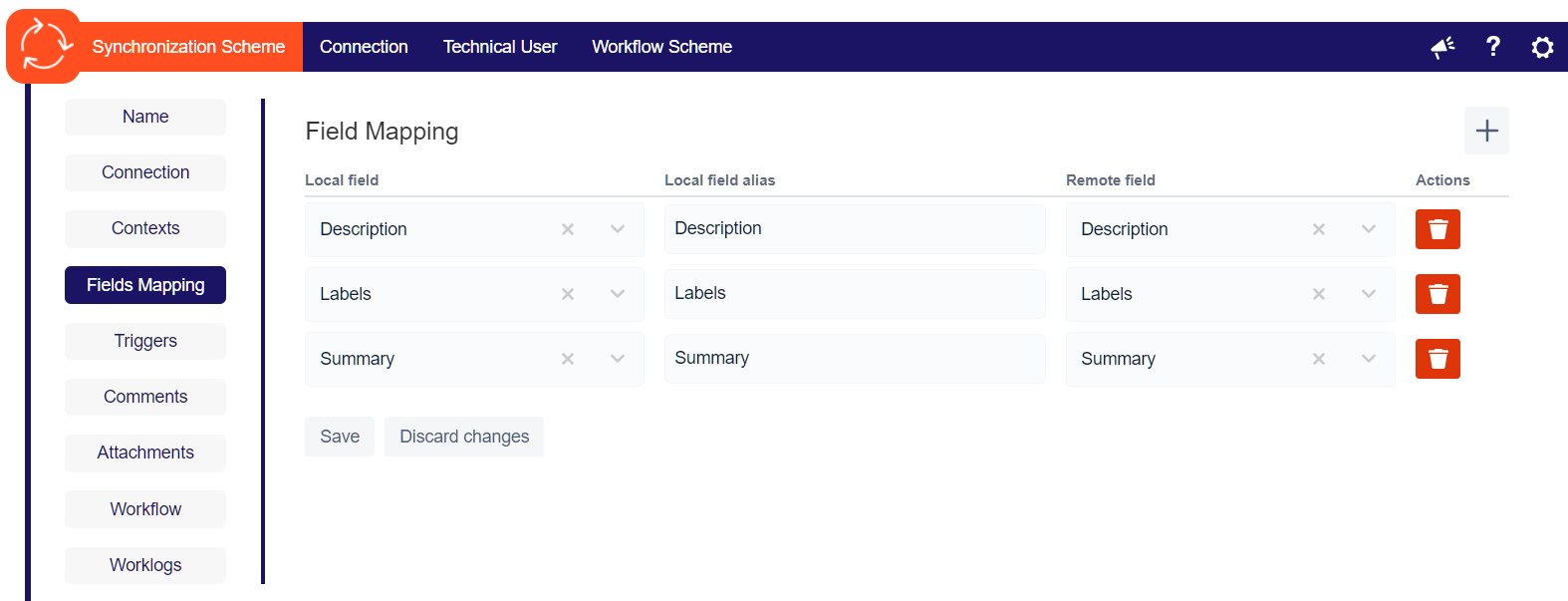Fields Mapping
| Local field | Select your local JIRA field, which you want to expose to remote JIRA instance |
|---|---|
| Local field alias | In remote JIRA instance your (previously selected) local field will be available as what you provide here |
| Remote field | (alias from remote JIRA) a field (in remote JIRA instance) you will synchronize value with |
How it works
Case 1: Remote field is left empty.
- Your local field value will not be sent to remote JIRA instance.
- Your local field can be updated by remote JIRA instance (remote field) value.
Case 2: Remote field is selected.
- Your field value will be propagated to remote JIRA instance (to relevant remote field).
- Your local field can be updated by remote JIRA instance (remote field) value.
